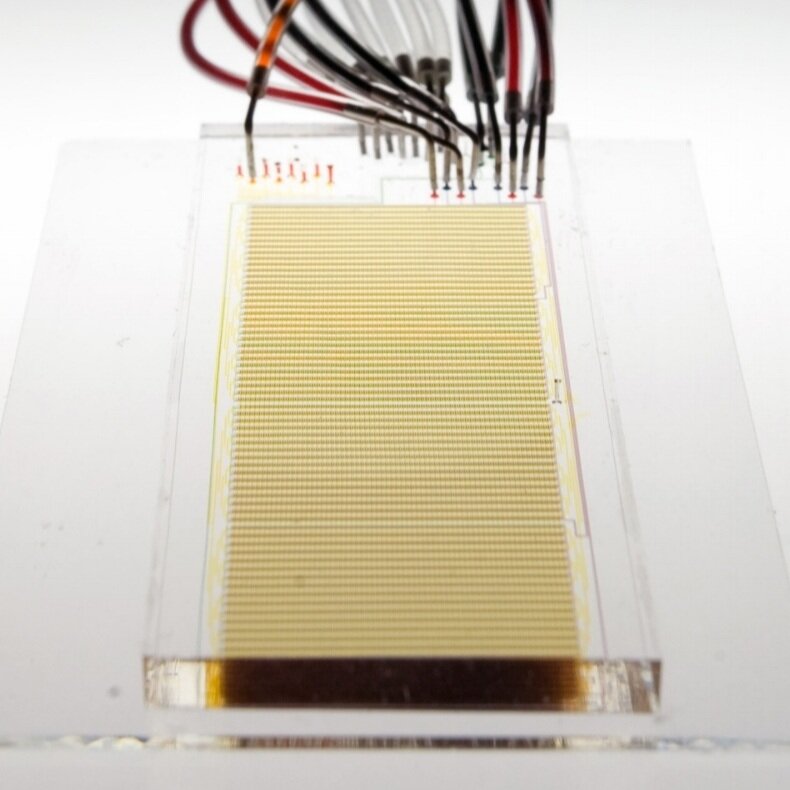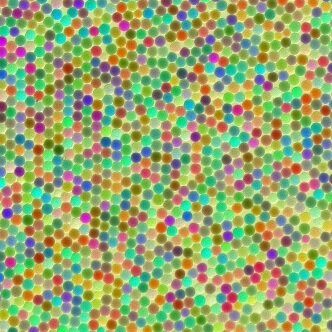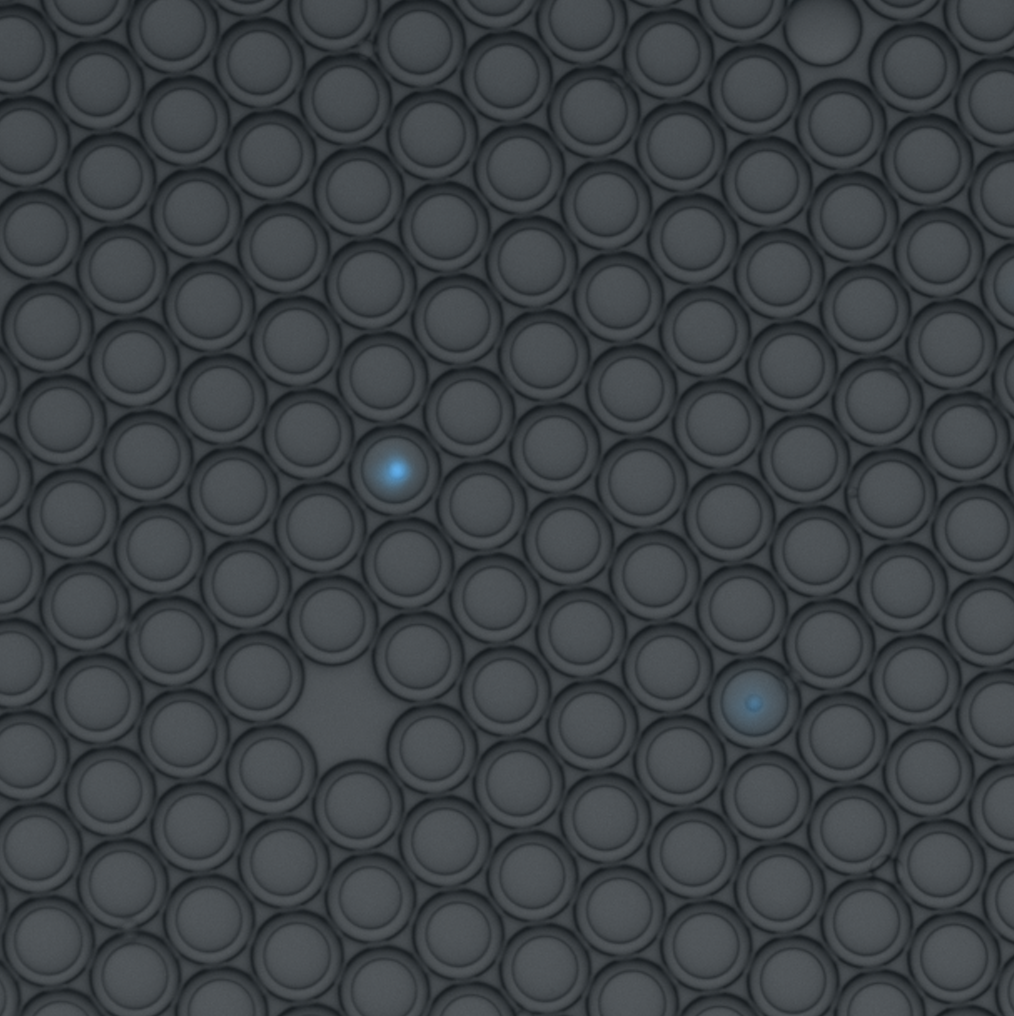


Array-based multiplexing experiments (MITOMI and HT-MEK) employ microfluidic devices containing 1,568 valved reaction chambers aligned to printed DNA arrays. We are currently using these devices to better understand how transcription factors find and bind their genomic targets to regulate gene expression, as well as to understand how enzymes achieve their extraordinary catalytic efficiency and substrate specificity.
MRBLEs (Microspheres with Ratiometric Barcode Lanthanide Encoding) rely on spectral multiplexing to track analytes throughout an experiment. We can create microspheres containing > 1,000 distinct ratios of lanthanide nanophosphors that can be uniquely identified via imaging alone, and are now using these MRBLEs in a variety of downstream assays.
Dropception is a microfluidic platform for creating double emulsion (water-in-oil-in-water) droplets that can be sorted in high-throughput using standard flow cytometers (FACS machines). We recently demonstrated the ability to generate and sort double emulsion droplets without breakage, isolate individual rare droplets of interest in wells of a multiwell plate, and recover all encapsulated nucleic acids, enabling a wide range of novel single-cell multi-omic techniques.